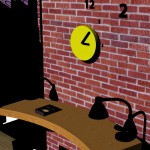I was invited by the ICAIT Technical Program Committee to give an invited talk about the values across the virtual and real. With an audience of people from the field of sensors, optical communication and wireless network, it was interesting to see how people are interested in the topic which was less hardware oriented.
Abstract Virtual societies and virtual worlds are now patriotically a part of lives of many people, especially the younger generations who have been growing up with the internet and mobile networks. Negative influences such as internet addiction and aggressive behavior have drawn attentions from researchers. As a result the focus has been on how to prevent them from spending too much of time in virtual societies and virtual worlds. A more interesting approach would be, by positively transferring or exchanging the values between the virtual and the real, to reach a more balanced experience in both worlds.
